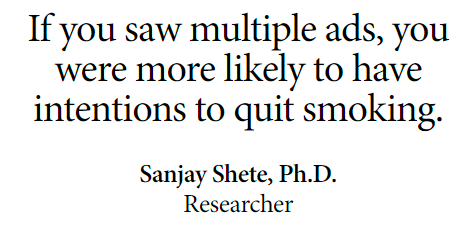What is an attitude?
Attitude is a set of beliefs in an object, contributing to how each individual responds to it. An object can be anything kept in our memory for a long period, e.g. an event, an item, a person,… Overall, attitude reflects how we respond to a specific object in terms of cognition, emotion, and action.
For instance, an environmental activist may believe that human activities are the primary cause of climate change. They state that everyone on Earth must protect the planet for future generations. They have a deep sense of concern and anger about the current state of the environment. Eventually, they actively engage in social initiatives and protests to change the situation.
Read More: Understand The Framing Effect In Marketing
Where do our attitudes come from?
1. Genetic factors
Some attitudes might be influenced by our biology or genetics. Researchers Tesser and Martin (1996) suggest that biological factors can play a role if:
- It’s hard to find a specific experience that shaped the attitude.
- People across different cultures have similar attitudes.
- The attitude makes sense from an evolutionary perspective.
- The attitude is linked to biological factors
For example, humans have an innate preference for sweet flavors, which is believed to be rooted in our evolutionary history. Sweetness often signals high-calorie foods that are crucial for survival in environments where food is scarce.
That’s why F&B brands like Coca-Cola, Hershey’s, and Ben & Jerry’s capitalize on the natural human inclination toward sweet flavors. These companies invest heavily in ensuring their products are not only sweet but also associated with positive experiences and emotions, reinforcing their appeal.
2. Mere exposure to a message
We tend to like things more simply because we are exposed to them repeatedly. Research on mere exposure to brand logos discovers that we can have a preference for a product that we were exposed to many times before even without our conscious perception. In other words, this happens without us even realizing it.
The rule of 7 in marketing, first introduced by the movie industry in the 1930s, claims that people will be driven to buy a product if they get exposed to it at least 7 times no matter what kind of promotion the brand uses.
If you hear a new song several times, you might start liking it more. Seeing a brand’s ad multiple times across different platforms increases the chances you’ll develop a positive attitude towards the brand and consider buying from them.
The more we get exposed to something, the more it becomes familiar and easier to recall. Our brains tend to view familiar things as safer and more trustworthy, which leads to a positive attitude toward them.
3. Continuous interaction with a stimulus
Our attitudes can be shaped by pairing new things with positive or negative experiences. If a neutral thing is often paired with something we already like or dislike, we start to feel the same way about the new thing. If you always eat a particular food while watching your favorite TV show, you might start liking that food more because it’s associated with the positive feelings from the show.
4. Reinforcement
Our attitudes can be influenced by rewards and punishments. If a behavior is followed by positive outcomes, we’re more likely to do it again. If it’s followed by negative outcomes, we’re less likely to do it. If a child is praised for being kind, they might develop a positive attitude towards kindness. If they are scolded for being rude, they might avoid rudeness in the future.
5. Social learning – Observe other people
We can learn attitudes by watching others, especially people we look up to like parents or role models. We imitate their behaviors and attitudes. The motive to imitate others stems from the concept of normative influence in which we feel pressured to confront other people’s expectations to get their approval and avoid social conflicts.
Children often pick up their parents’ attitudes and values by observing and copying them, even if the parents don’t intentionally teach these attitudes. When children adopt their parents’ attitudes and values through observation, they are often influenced by the desire to fit in, gain approval, or avoid conflict, which are key aspects of normative influence.
Read More: All You Need To Know About Heuristics In Decision-Making
The Psychology of Cognitive Dissonance
Cognitive dissonance is a psychological theory proposed by Leon Festinger, which suggests that we always prefer consistency between our beliefs and thoughts. Thus, when we encounter conflicting thoughts, we experience cognitive dissonance or mental discomfort.
This discomfort drives us to take certain actions to reduce the dissonance and restore mental ease. We can change our existing behaviors to align with new attitudes or add more defensive thoughts to balance the conflict. Some may trivialize either of the beliefs or even ignore them all.
For instance, one classic experiment involved participants doing a boring task and then being asked to persuade others that the task was enjoyable. Afterward, these participants adapted their attitude toward the task to reduce the dissonance between their behavior (saying the task was enjoyable) and their initial belief (that the task was boring).
Cognitive Dissonance: Why is it so hard to challenge existing attitudes?
Many practical lessons told us that brands should never challenge existing and deep-rooted consumer attitudes. For instance, the current anti-celibacy campaign – ‘You Know Full Well A Vow of Celibacy Is Not The Answer’ by Bumble has received such a huge backlash that the dating app issued a public apology for challenging the audience’s marital choice.

To explain, the brand accidentally discomforted the audience by suggesting a conflicting belief. This triggers their resistance to the message to restore mental harmony and feel safe.
The reason why it is difficult to change consumers’ existing attitudes is that they actively maintain cognitive consistency. Consumers may find it challenging and time-consuming to reconstruct their thoughts and form a new attitude when seeing a conflicting message that forces them to change. Consequently, they often refuse to change the existing attitudes and even become irritated by the marketing message that goes the opposite.
Example: Why some anti-smoking ad campaigns do not work
Globally, the adult smoking prevalence was 32.6% overall, with 6.5% among women and a higher percentage among men in 2020, according to the National Institutes of Health. Approximately 1.18 billion people smoked tobacco regularly, leading to an estimated 7 million deaths in that year.
Anti-smoking ad campaigns play an essential role in urging smokers to consider quitting and preventing prospects like the youth from adopting this devastating habit. Yet, these anti-smoking advertisements, sponsored by the tobacco industry, have had mixed effectiveness.
While they reached a significant portion of the population, including 66% of current smokers, their impact on actual quit attempts was limited. A study on the effect of anti-smoking ads shows there is no link between ad exposure and the effort to quit smoking. Anti-smoking ads are only effective in making smokers consider quitting, not turning them into active quitters.

To further worsen the situation, anti-smoking ads targeting the youth have even shown a counterproductive impact. 70% of teens are reported to be more likely to try smoking after seeing the e-cigarette ads since they feel impressed by the characters. These ads even make teens feel like smoking would make them popular, sophisticated, attractive, or tough.
What’s wrong with these anti-smoking ads?
The primary reasons many anti-smoking ads fail to be effective include the nature of the message and the visual elements used in the ads. Messages that create fear or stress might be perceived as exaggerated and tend to trigger defensive reactions rather than prompt behavior change. Ads that unintentionally feature attractive characters can make smoking seem appealing, especially to teens.
Cognitive Dissonance also gives us a hint about why it is so hard for ad campaigns alone to change smokers’ attitudes. When the ads illustrate the health risks of smoking, they create dissonance in smokers who value their habit. Some may find defensive reasons to back up their habit such as smoking helps deal with stress and anxiety, smoking is still better than alcohol and an unhealthy diet, etc. Some might even reject or ignore the ads to reduce this uncomfortable feeling.
Instead of persuading people to quit, some ads end up triggering a sense of resistance among smokers, making them more inclined to defend themselves and smoke more frequently. This counterproductive effect has been proven in the case of anti-smoking campaigns for the youth.
How Can Marketers Influence Attitude Change?
Research emphasizes the role of information justification in attitude change. Consumers are more likely to change their attitudes if they think there is sufficient justification for doing so.
For marketers, simply showing a better product or a persuasive advertisement may not be enough since people do not find it appealing or worth reconstructing their minds. Marketers should consider 3 pillars of attitudes including self-affirmation, social connection, and informational influence to reduce cognitive dissonance and gradually modify customers’ beliefs without causing resistance.
Self-coherence involves aligning marketing messages with consumers’ self-identity to maintain a coherent and favorable self-concept. Social relationships focus on using social proof and highlighting rewards or punishments from others to motivate behavior change. Informational influence requires accurate and critical information to help consumers form well-rounded, informed attitudes.
Marketing strategies must present compelling reasons for change and address the discomfort arising from cognitive dissonance. Marketers can achieve this by introducing new brand experiences that align with desired attitudes, fostering a sense of justification, and minimizing cognitive inconsistency.
In the case of anti-smoking campaigns, running advertisements is no longer enough to urge smokers and prospective smokers to quit the behavior. Marketers should look into more innovative and creative approaches such as personalized behavioral feedback and social influence. Also, interactive and experiential campaigns should be prioritized over static ads. Companies need to simulate the adverse consequences of smoking on people’s health firsthand.
Read More: The IKEA Effect: When Value Co-creation Maximizes Marketing Outcomes
Academic Sources For This Blog:
Bohner, G. and Wanke, M. (2002) Attitudes and attitude change. 1st edition. New York: Psychology Press.
Festinger, L. (2001) A Theory of Cognitive Dissonance. 2nd edition. California: Standford University Press.
Wood, W. (2000) Attitude change: Persuasion and social influence. Annual Review of Psychology. 51(1), pp.539-570.
Sy Chu
As an analytical and creative marketing enthusiast skilled in customer analysis, content research and brand management, my passion is help businesses gain insights into their brand and marketing strategies to drive impactful outcome to their success.
